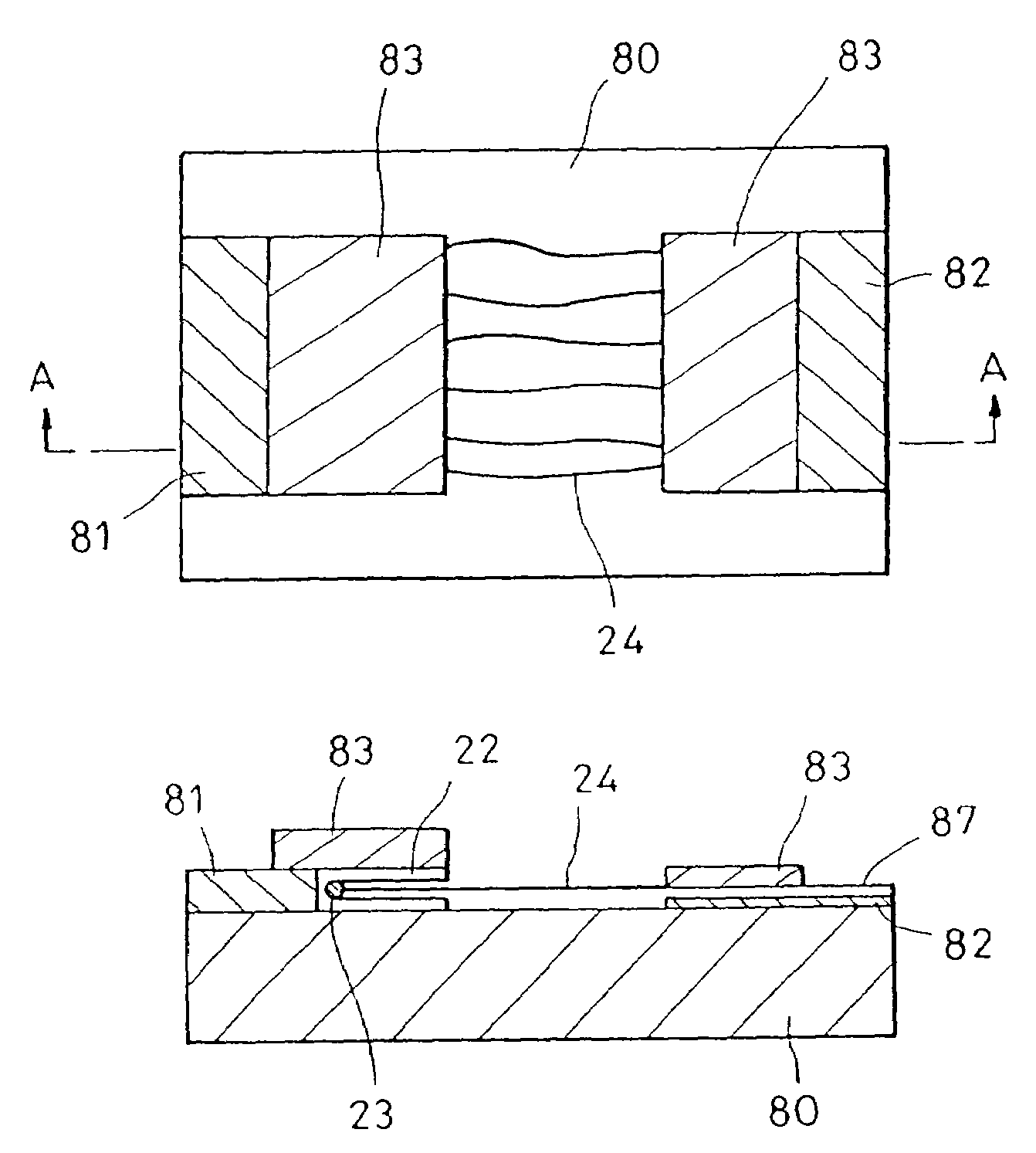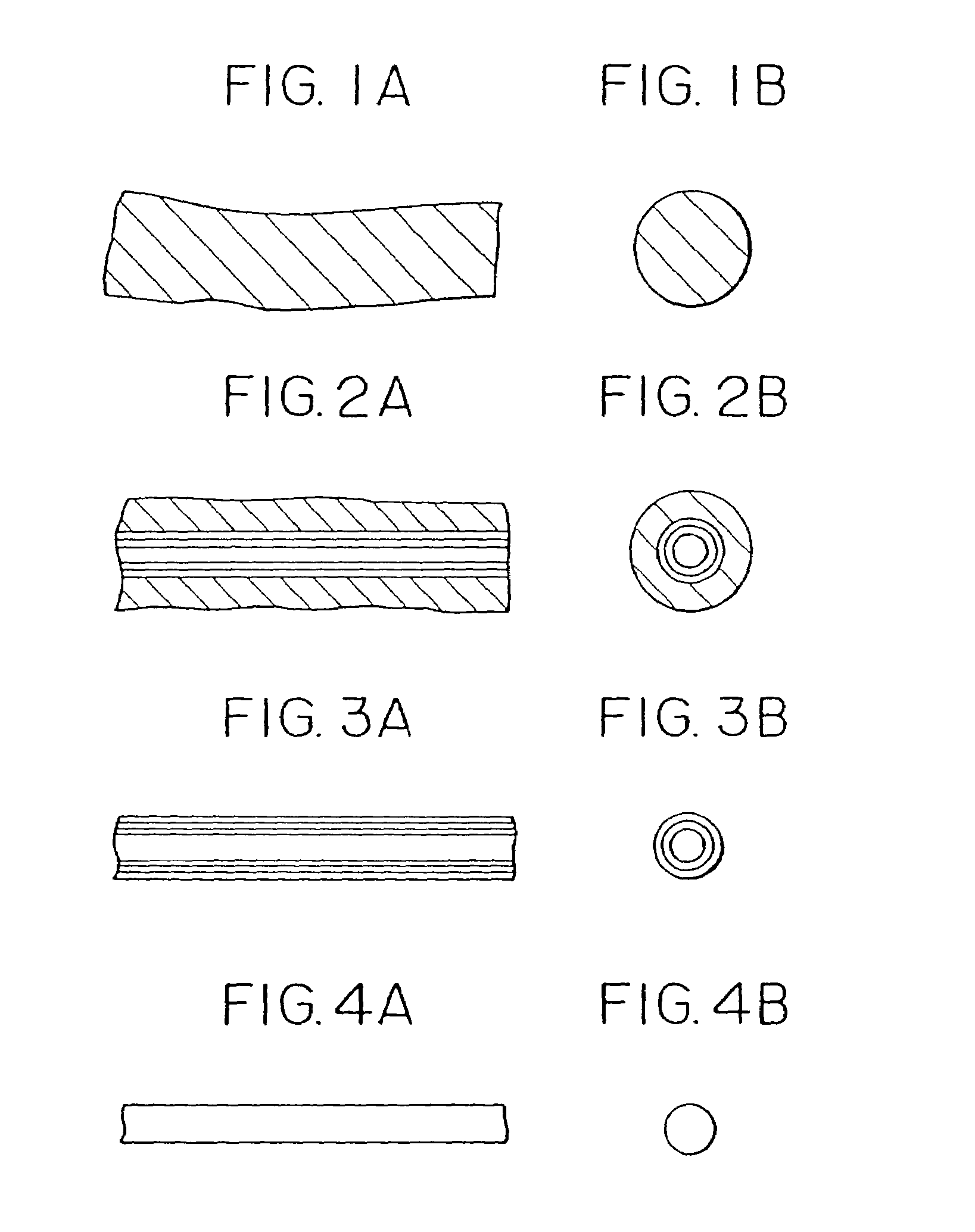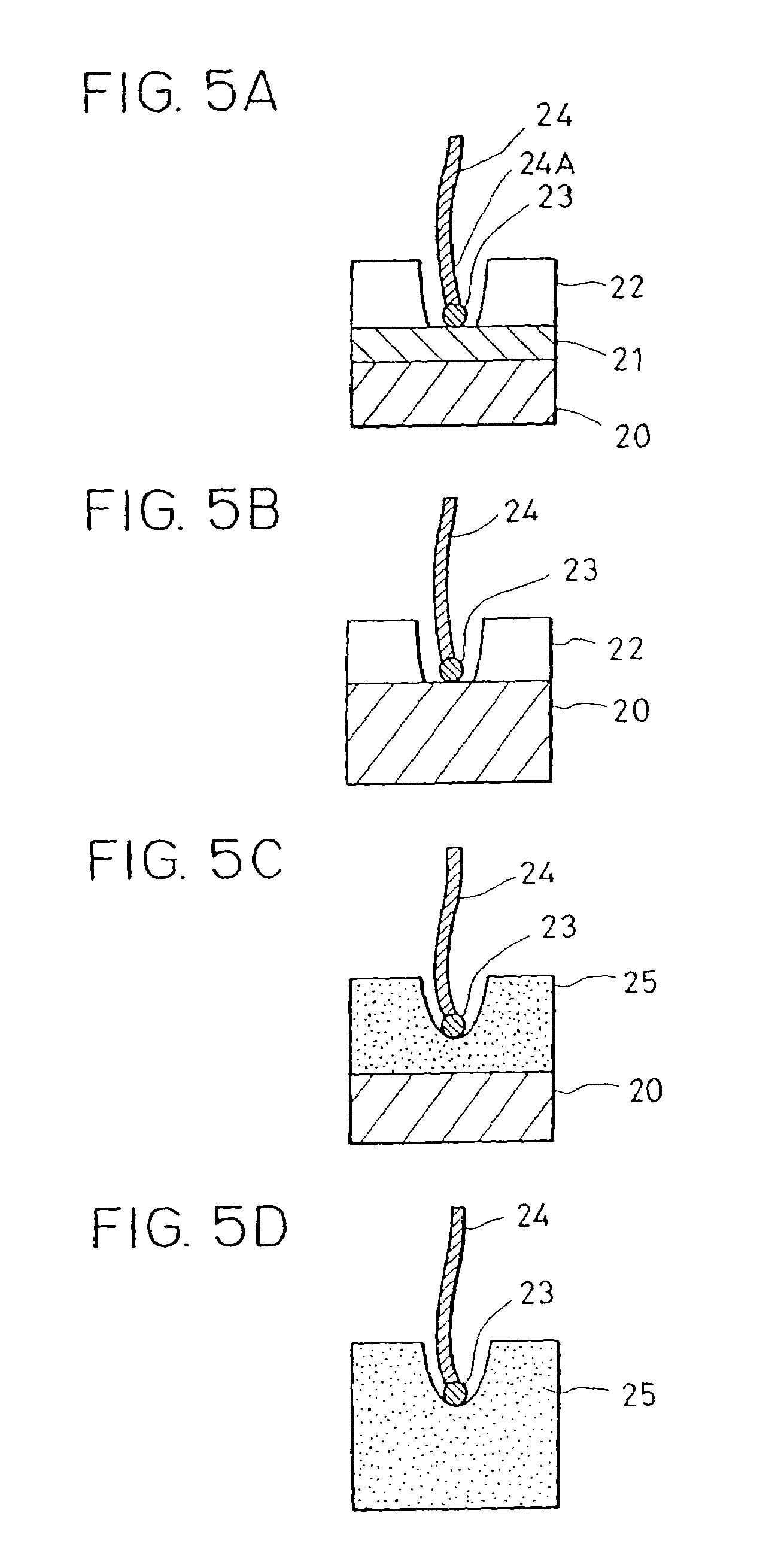Method of manufacturing an electronic device containing a carbon nanotube
a carbon nanotube and electronic device technology, applied in the manufacture of electric discharge tubes/lamps, instruments, electrode systems, etc., can solve the problems of difficult to obtain devices fully utilizing the characteristics of individual carbon nanotubes, the application of carbon nanotubes tending to get entangled with each other, and the inability to produce carbon nanotubes of the same structure. , to achieve the effect of good electron emission performance, good photoelectric performance and good photoelectric performan
- Summary
- Abstract
- Description
- Claims
- Application Information
AI Technical Summary
Benefits of technology
Problems solved by technology
Method used
Image
Examples
example 1
[0115](1) An Si wafer support having a clean surface was provided as a support. Ti was formed into a film having a thickness of 100 nm on the surface of the Si wafer by the sputtering process. The sputtering was carried out by applying RF power of 400 W and under Ar gas partial pressure of 5 mm Torr. After forming the Ti film, an Al film having a thickness of 1 μm was formed under the same conditions except for changing the target to Al in the same apparatus, thereby preparing a support 20 as shown in FIG. 8A.
[0116]A support having the layered structure as shown in FIG. 8A was prepared in the same manner as above except that the Ti thin film was changed to a Zr, Nb, Ta, Mo, Cu, Zn, Pd or Au thin film.
[0117]Each of the resultant supports was immersed in a 0.3 M oxalic acid solution, and then anodic oxidation of Al was carried out by using the support as an anode and Pt as a cathode and applying a voltage of 40 V while keeping a temperature of 17° C. As shown in FIG. 13, the beginning...
example 2
[0135]An example of the manufacturing method when the catalytic metal and the electrode film are the same will now be described.
[0136]As in Example 1, by the use of an Si wafer substrate cleaned as a support, a Co film having a thickness of 0.1 μm was formed on the support by the RF sputtering process. Then, in the same apparatus with the target changed to Al, and Al film was continuously formed into a thickness of 0.2 μm to form an Al / Co layered film. The sputtering conditions included an RF power of 400 W and an Ar atmosphere at 5 mTorr.
[0137]This support was immersed in a 0.3 M oxalic acid solution, and the Al film was anodically oxidized by using support as an anode and Pt as a cathode and impressing 40 V while keeping a temperature of 17° C. As a result of voltage impression, the Al surface was first rapidly oxidized, leading to a decrease in current value. After start of formation of narrow holes, the current value increased to a constant value. Upon the completion of oxidatio...
example 3
[0145]An example of carbon nanotube device in which the wall, the layer composing the conductive surface and the support are all prepared with Si will now be described with reference to the schematic process descriptive view shown in FIGS. 9A to 9C and the equipment schematic diagram shown in FIG. 7.
[0146]An ohmic contact was prepared by using a p-type substrate having a low resistance (several mm to several hundred mmΩcm) as a support, forming an Al film having a thickness of about 1 μm on the back of the p-type Si substrate and annealing at 400° C.
[0147]Then, anodization of the support was carried out with the support immersed in an aqueous solution containing 10% fluoric acid and 5% alcohol to serve as an anode and with Pt as a cathode. Al on the back was arranged so as not to come into contact with the fluoric acid solution, and an electrode was taken from the Al surface. Conditions were set to give a current value of several tens of mA / cm2 upon anodization. After the completion...
PUM
| Property | Measurement | Unit |
|---|---|---|
| diameter | aaaaa | aaaaa |
| diameter | aaaaa | aaaaa |
| temperature | aaaaa | aaaaa |
Abstract
Description
Claims
Application Information
 Login to View More
Login to View More - R&D
- Intellectual Property
- Life Sciences
- Materials
- Tech Scout
- Unparalleled Data Quality
- Higher Quality Content
- 60% Fewer Hallucinations
Browse by: Latest US Patents, China's latest patents, Technical Efficacy Thesaurus, Application Domain, Technology Topic, Popular Technical Reports.
© 2025 PatSnap. All rights reserved.Legal|Privacy policy|Modern Slavery Act Transparency Statement|Sitemap|About US| Contact US: help@patsnap.com



